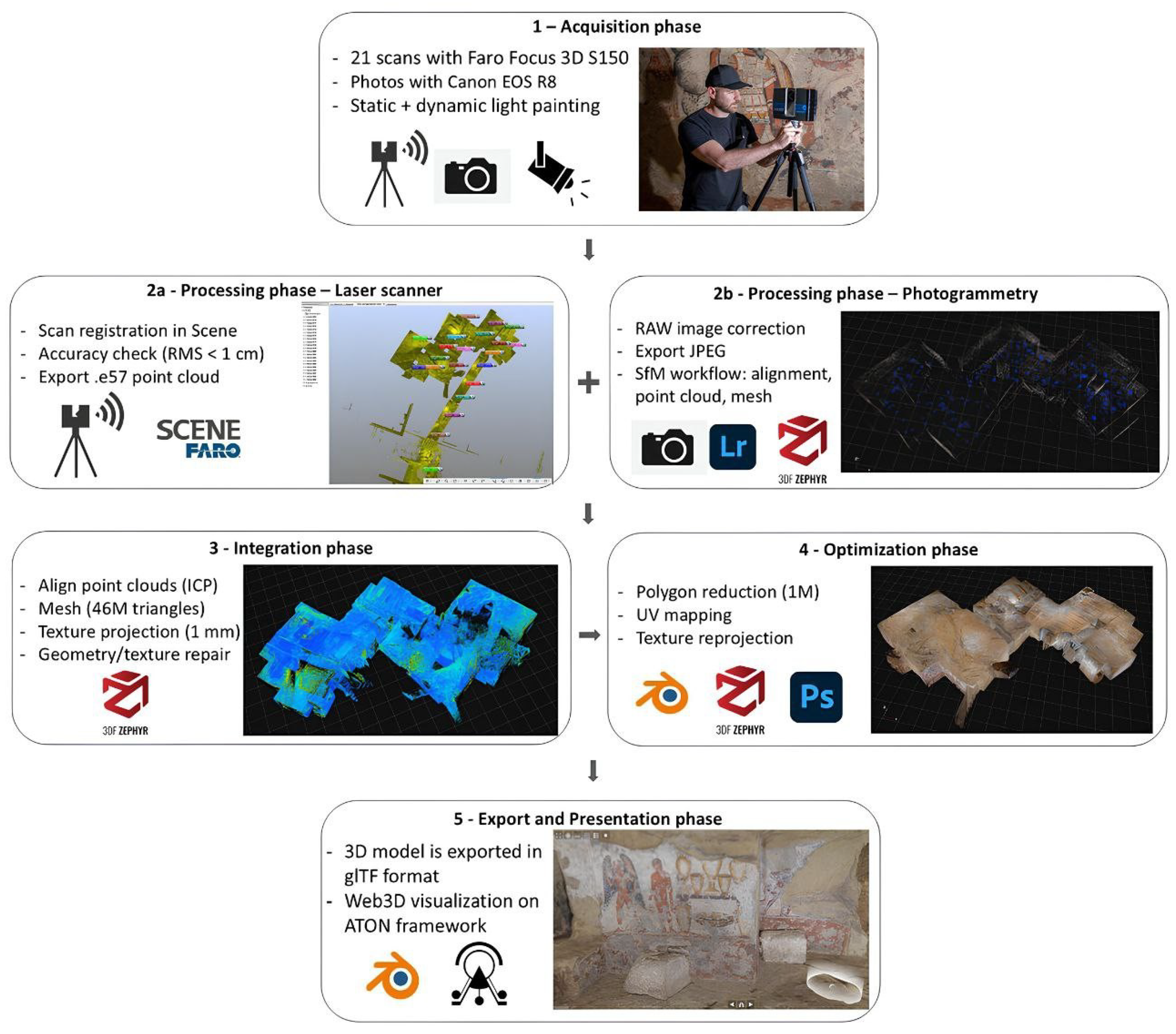Bringing Light into the Darkness: Integrating Light Painting and 3D Recording for the Documentation of the Hypogean Tomba dell’Orco, Tarquinia
Abstract
1. Introduction
2. Materials and Methods
- What is the most effective approach for collecting metrological data and acquiring color information through 3D recording of a cultural heritage hypogean structure? Could the integration of dynamic lighting techniques provide new tools to overcome the challenges posed by such underground and poorly lit environments?
- What technologies might facilitate the effective documentation and monitoring of frescoes within a humid and poorly lit environment?
- How can an integrated approach—combining advanced digital documentation, remote sensing systems, and virtual access solutions—contribute to the conservation and enhancement of cultural heritage in such challenging conditions?
- What strategies can be implemented to ensure visitor engagement with a monument that cannot be directly accessed?
2.1. Case Study
2.2. Methodology
- Acquisition Phase: The raw data was collected on field using appropriate tools and techniques ( photogrammetry and laser scanner).
- Processing Phase: The raw data produced during the acquisition phase is processed to generate an initial raw model.
- Integration Phase: A human operator resolves any topological inconsistencies in the raw model, ensuring the proper integration of point clouds derived from both the laser scanning and photogrammetric workflows
- Optimization Phase: The model is simplified to meet specific usage requirements, resulting in an optimized version.
- Export and Presentation Phase: The optimised model is exported to a web-based framework (e.g., ATON) for presentation.
2.2.1. Acquisition
- 1.
- Laser Scanning:For the architectural documentation of the visible remains, 21 laser scans were acquired using a Faro Focus 3D S150 (Lake Mary, FL, USA), a phase-shift laser scanner. Each scan was performed with a resolution of one point every 6 mm within a 10-m radius. This configuration allowed for an optimal balance between acquisition time and the geometric resolution of the archaeological structures. Spherical calibration targets were placed on site to facilitate scans registration during post-processing activities. The distribution of these targets was planned to ensure significant overlap areas between individual scans and to guarantee that at least 3 spheres were visible from every scan position. The 21 scans were carried out from multiple positions, with careful planning of TLS placement to minimise shadowed areas.
- 2.
- Photogrammetric Survey:In photogrammetric acquisition, lighting affects the accuracy of the 3D surface and the fidelity of the texture images. Accordingly, we adopted diffuse, uniform illumination to produce high-resolution, consistent imagery for texturing the laser-scanned 3D model.The Tomba dell’Orco, being a hypogeal environment, is completely devoid of natural light. It is equipped with a system of warm-toned spotlights intended to guide visitor circulation, which, however, results in uneven illumination and the presence of hard cast shadows. To address this limitation, a dedicated lighting setup was implemented using four mobile LED spotlights calibrated to match the colour temperature of the tomb’s existing lighting system. A colour checker was employed during the image acquisition to allow for precise white balance correction during RAW image processing.To complement the laser scanning survey and to enrich the dataset with detailed visual information, a photogrammetric campaign was conducted. A mirroless Canon EOS R8 (Tokyo, Japan) full-frame camera, equipped with a 24 mm f/1.4 L lens, was selected for its high optical quality and wide-angle capabilities, well-suited for operation in constrained environments. The LED lights were repositioned strategically throughout the acquisition to create a diffuse and consistent lighting environment, effectively minimising the presence of cast shadows.All photographs were taken using a tripod and a remote shutter release to ensure maximum stability and image sharpness. The depth of field was optimised by selecting an aperture between f/8 and f/16, ensuring uniform sharpness across the entire scene. Sequence planning was important: we first established a baseline sweep along the corridors axis, then circled pillars to capture all faces with consistent incident angles, and then filled occluded areas, and lastly we captured the ceilings (Figure 4).
- 3.
- Light painting:Inside the Etruscan tomb, uneven illumination was the main obstacle. The space is highly articulated, narrow corridors, central pillars, and static LED panels produced hard cast shadows and strong fall-off. Adding more lamps did not solve the problem in tight passages. Similar conditions and solutions are reported in the literature, where teams alternate between flashlights in extremely narrow spaces and light-painting for totally dark environments; multi-flash arrays are discussed but often deemed impractical when space and operators are limited [15]. Other colleagues also note vignetting and hotspot issues with on-camera or speedlight solutions, favoring light-painting to obtain uniform illumination for SfM [34]. More recently, “Chiaroscuro Photogrammetry” systematizes long-exposure imaging with a small, handheld LED moved across the scene, so that illumination is averaged over time while preserving the local contrast typical of a point source. This approach has documented advantages over flash, improving surface continuity and texture legibility [14].In our case, we faced the same spatial and logistical constraints noted by these authors and therefore avoided flash systems altogether. We adopted a light-painting strategy consistent with this body of work. Light painting is a long-exposure photographic technique in which a light source is moved through the scene during the exposure [35]. The adopted workflow was the following: the camera was mounted on a tripod and operated in full manual mode with constant parameters for SfM (ISO 100–200, aperture f/8–f/16, multi-second exposures), fixed white balance and remote triggering. For each image, an operator slowly “painted” the scene with one or two handheld LED lights, sweeping across walls, ceiling, floor, and around pillars (Figure 5); the continuous motion averaged light directionality, reducing cast shadows and fall-off while minimizing flare and hotspots. We maintained 70–80% overlap along corridors and around pillars, added obliques to strengthen geometry, placed coded targets where permitted, and verified histograms on site to avoid clipping. This workflow, inspired by above-mentioned practices, produced images with uniform illumination and textures well suited to tie-point extraction and dense matching in these confined, complex interiors (Figure 6).
2.2.2. Processing
2.2.3. Integration
2.2.4. Optimization and Texture Re-Projection
2.2.5. Export and Presentation
3. Results
4. Discussion
- Illumination uniformity: estimated 70–80% reduction in cast shadows and lighting discontinuities.
- Acquisition efficiency: 25–30% reduction in time spent repositioning lighting equipment.
- Texture coherence on curved surfaces: perceived 30–40% improvement in chromatic continuity on concave or irregular areas.
- Post-processing efficiency: 30–40% reduction in time needed for masking, shadow correction, and colour balancing.
5. Conclusions
Author Contributions
Funding
Institutional Review Board Statement
Informed Consent Statement
Data Availability Statement
Acknowledgments
Conflicts of Interest
References
- Calicchia, P.; Ceccarelli, S.; Colao, F.; D’Erme, C.; Di Tullio, V.; Guarneri, M.; Luvidi, L.; Proietti, N.; Spizzichino, V.; Zampelli, M.; et al. Multi-Technique Approach for the Sustainable Characterisation and the Digital Documentation of Painted Surfaces in the Hypogeum Environment of the Priscilla Catacombs in Rome. Sustainability 2024, 16, 8284. [Google Scholar] [CrossRef]
- Aricò, M.; La Guardia, M.; Lo Brutto, M. 3D Data Integration for Web Fruition of Underground Archaeological Sites: A Web Navigation System for the Hypogeum of Crispia salvia (Marsala, Italy). Heritage 2023, 6, 5899–5918. [Google Scholar] [CrossRef]
- Aricò, M.; La Guardia, M.; Lo Brutto, M. Web Exploration Of Cultural Heritage With Limited Accessibility: First Experimentation For Hypogeum Archaeological Sites. Int. Arch. Photogramm. Remote Sens. Spatial Inf. Sci. 2023, XLVIII-M-2-2023, 111–117. [Google Scholar] [CrossRef]
- Chiabrando, F.; Sammartano, G.; Spanò, A.; Spreafico, A. Hybrid 3D Models: When Geomatics Innovations Meet Extensive Built Heritage Complexes. ISPRS Int. J. Geo-Inf. 2019, 8, 124. [Google Scholar] [CrossRef]
- Alshawabkeh, Y.; Baik, A.; Miky, Y. Integration of Laser Scanner and Photogrammetry for Heritage BIM Enhancement. ISPRS Int. J. Geo-Inf. 2021, 10, 316. [Google Scholar] [CrossRef]
- Taccola, E.; Rosselli, L.; Albertini, N.; Martino, M. Etruscan hypogea in 3D: A proposal for an immersive and interactive visualization of Volterra’s funerary contexts. Archeol. Calc. 2021, 32, 135–152. [Google Scholar] [CrossRef]
- Muñoz-Muñoz, A.; Fernández-Sánchez, D.; Vijande-Vila, E.; Becerra-Martín, S.; Cantillo-Duarte, J.J.; Domínguez-Bella, S.; Martínez Enamorado, V.; Rengel Castro, F.; Cantalejo Duarte, P.; Espejo-Herrerías, M.D.M.; et al. Application of photogrammetry and laser scanner on the Bronze Age structures of the Castillejos de Luna cist tomb necropolis (Pizarra, Spain). Virtual Archaeol. Rev. 2023, 14, 26–44. [Google Scholar] [CrossRef]
- Ruiz, R.M.; Torres, M.T.M.; Allegue, P.S. Comparative Analysis Between the Main 3D Scanning Techniques: Photogrammetry, Terrestrial Laser Scanner, and Structured Light Scanner in Religious Imagery: The Case of The Holy Christ of the Blood. J. Comput. Cult. Herit. 2022, 15, 1–23. [Google Scholar] [CrossRef]
- Milosz, M.; Kęsik, J.; Montusiewicz, J. 3D Scanning and Visualization of Large Monuments of Timurid Architecture in Central Asia—A Methodical Approach. J. Comput. Cult. Herit. 2021, 14, 1–31. [Google Scholar] [CrossRef]
- Apollonio, F.I.; Apollonio, F.I.; Fantini, F.; Fantini, F.; Garagnani, S.; Garagnani, S.; Garagnani, S.; Gaiani, M.; Gaiani, M. A Photogrammetry-Based Workflow for the Accurate 3D Construction and Visualization of Museums Assets. Remote Sens. 2021, 13, 1–39. [Google Scholar] [CrossRef]
- Wong, L.; Rose, W.; Dhanda, A.; Flavin, A.; Barazzetti, L.; Ouimet, C.; Santana Quintero, M. Maximizing the Value of Photogrammetric Surveys in the Conservation of Wall Paintings. Int. Arch. Photogramm. Remote Sens. Spat. Inf. Sci. 2021, 46, 851–857. [Google Scholar] [CrossRef]
- Rose, W.; Barazzetti, L.; Corda, K.; Wong, L. Research and development of a photogrammetric condition monitoring workflow to improve change detection in wall paintings. Stud. Conserv. 2022, 67, 235–244. [Google Scholar] [CrossRef]
- Huang, Y.; Tsang, S.C.; Wong, H.T.T.; Lam, M.L. Computational light painting and kinetic photography. In Proceedings of the Joint Symposium on Computational Aesthetics and Sketch-Based Interfaces and Modeling and Non-Photorealistic Animation and Rendering, Victoria, BC, Canada, 17–19 August 2018; pp. 1–9. [Google Scholar] [CrossRef]
- Jalandoni, A.; Haubt, R.; Walshe, K.; Nowell, A. Chiaroscuro Photogrammetry: Revolutionizing 3D Modeling in Low Light Conditions for Archaeological Sites. J. Field Archaeol. 2025, 50, 132–144. [Google Scholar] [CrossRef]
- Rossi, C.; Fassi, F.; Achille, C. LIFE Project: Evolution of survey techniques along the border of the Roman Empire. In Proceedings of the IMEKO International Conference on Metrology for Archaeology and Cultural Heritage, Turin, Italy, 19–21 October 2016; pp. 95–99. [Google Scholar]
- Salamon, N.Z.; Lancelle, M.; Eisemann, E. Computational Light Painting Using a Virtual Exposure. Comput. Graph. Forum 2017, 36, 1–8. [Google Scholar] [CrossRef]
- Pope, F.D.; Price, R.; Woolley, K.E.; Luiu, C.; Alam, M.S.; Avis, W.R.; Bartington, S.E.; Debebe, D.; Getaneh, Z.; Greenfield, S.M.; et al. Light painting photography makes particulate matter air pollution visible. Commun. Earth Environ. 2024, 5, 294. [Google Scholar] [CrossRef]
- Fanini, B.; Ferdani, D.; Demetrescu, E.; Berto, S.; d’Annibale, E. ATON: An Open-Source Framework for Creating Immersive, Collaborative and Liquid Web-Apps for Cultural Heritage. Appl. Sci. 2021, 11, 11062. [Google Scholar] [CrossRef]
- Ferdani, D.; Ronchi, D.; Fanini, B.; Manganelli Del Fà, R.; d’Annibale, E.; Bordignon, A.; Pescarin, S. Brancacci Chapel In Florence: Surveying And Real-Time 3d Simulation For Conservation And Communication Purposes. Int. Arch. Photogramm. Remote Sens. Spatial Inf. Sci. 2023, XLVIII-M-2-2023, 535–540. [Google Scholar] [CrossRef]
- Helbig, W. Dipinti tarquiniesi. Ann. Inst. Corrisp. Archeol. 1870, 42, 5–74. [Google Scholar]
- Weber-Lehmann, C. Polyphem in der Unterwelt? Zur Tomba dell’Orco II in Tarquinia. In Mitteilungen des Deutschen Archäologischen Instituts, Römische Abteilung; Deutsches Archäologisches Institut: Berlin, Germany, 1995; Volume 102. [Google Scholar]
- D’Agostino, S.; Lombardi, G.; Russo, G.; Viggiani, C. Structural engineering and geology applied to the static problems of the Etruscan ”Tomba dell’Orco” (Tarquinia, Central Italy). J. Cult. Herit. 2010, 11, 107–112. [Google Scholar] [CrossRef]
- Torelli, M. Gli Spurinas: Una Famiglia di Principes Nella Tarquinia della “Rinascita”; “L’Erma” di Bretschneider: Rome, Italy, 2019. [Google Scholar]
- Torelli, M. Elogia Tarquiniensia; Sansoni: Firenze, Italy, 1975. [Google Scholar]
- Ortoleva, J.K. Sounds of Etruria: Aural characteristics of the Tomba dell’Orco, Tarquinia. Antiquity 2021, 95, 1179–1194. [Google Scholar] [CrossRef]
- Massa Pairault, F.H. La Tombe François et la vision politique de l’Étrurie au IVè siècle a. C. Ostraka Ostraka Riv. Antich. 2013, 22–23, 7–91. [Google Scholar]
- Harari, M. Orco III. Quad. ACME 2013, 134, 287–308. [Google Scholar]
- Morandi, M. Novità sui Velcha di Tarquinia. Archeol. Class. 1995, 47, 267–288. [Google Scholar]
- Maggiani, A. Simmetrie architettoniche, dissimmetrie rappresentative. Osservando le pitture della Tomba degli Scudi di Tarquinia. In Proceedings of the Ricerche in Corso tra Etruria e Campania, Atti della Giornata di Studio, Santa Maria Capua Vetere, Italy, 28 March 2003; Arte Tipografica Editrice: Napoli, Italy, 2005; pp. 115–143. [Google Scholar]
- Sodo, A.; Artioli, D.; Botti, A.; De Palma, G.; Giovagnoli, A.; Mariottini, M.; Paradisi, A.; Polidoro, C.; Ricci, M.A. The colours of Etruscan painting: A study on the Tomba dell’Orco in the necropolis of Tarquinia. J. Raman Spectrosc. 2008, 39, 1035–1041. [Google Scholar] [CrossRef]
- Tomassetti, M.C.; Bellelli, V.; Garzulino, A.; Marzullo, M.; Morezzi, E.; Vagnarelli, T. I nuovi Piani per la Conservazione Programmata del Parco archeologico di Cerveteri e Tarquinia: Aggiornamento dei sistemi di gestione per la conoscenza, la conservazione e la manutenzione dei monumenti e della vegetazione e per i rischi connessi al cambiamento climatico. In Proceedings of the Atti del Convegno «Conservazione Preventiva e Programmata. Verso un Protocollo Condiviso nei Luoghi della Cultura», Roma, Italy, 7–8 May 2025. Perugia, Italy, 9 May 2025 Under Publication. [Google Scholar]
- Barzaghi, S.; Bordignon, A.; Collina, F.; Fabbri, F.; Fanini, B.; Ferdani, D.; Gualandi, B.; Heibi, I.; Mariniello, N.; Massari, A.; et al. A reproducible workflow for the creation of digital twins in the cultural heritage domain. Transform. Dariah J. 2025, 1, 1–62. [Google Scholar] [CrossRef]
- Bordignon, A.; Barzaghi, S.; Collina, F.; Fabbri, F.; Fanini, B.; Ferdani, D.; Marinello, N.; Moretti, A.; Rega, M.F.; Sullini, M. Guidelines for the Digitisation of Museum and Art Collections: Guidelines for Digitisation of Collections’ Items: Guidelines for 360° Virtual Tours: Guidelines for Digitisation of Architecture-Scale Objects. 2024. Available online: https://zenodo.org/records/14249936 (accessed on 21 October 2025).
- Perfetti, L.; Fassi, F.; Rossi, C. Low-cost digital tools for archaeology. In Innovative Models for Sustainable Development in Emerging African Countries; Springer: Berlin/Heidelberg, Germany, 2020; p. 137. [Google Scholar]
- Bertrand, S.; Prevost, L.; Ionascu, F.; Briere, A.; Koskas, R.; Taquet, R.; Andrianantoandro, F.; Kanzari, M. Light painting with mobile robots as motivating projects for robotics and control education. In Proceedings of the International Conference on Robotics in Education (RiE), Online, 27–28 April 2022; Springer: Berlin/Heidelberg, Germany, 2022; pp. 27–38. [Google Scholar]
- Remondino, F. Heritage recording and 3D modeling with photogrammetry and 3D scanning. Remote Sens. 2011, 3, 1104–1138. [Google Scholar] [CrossRef]
- Papadopoulos, C.; Gillikin Schoueri, K.; Schreibman, S. And Now What? Three-Dimensional Scholarship and Infrastructures in the Post-Sketchfab Era. Heritage 2025, 8, 99. [Google Scholar] [CrossRef]


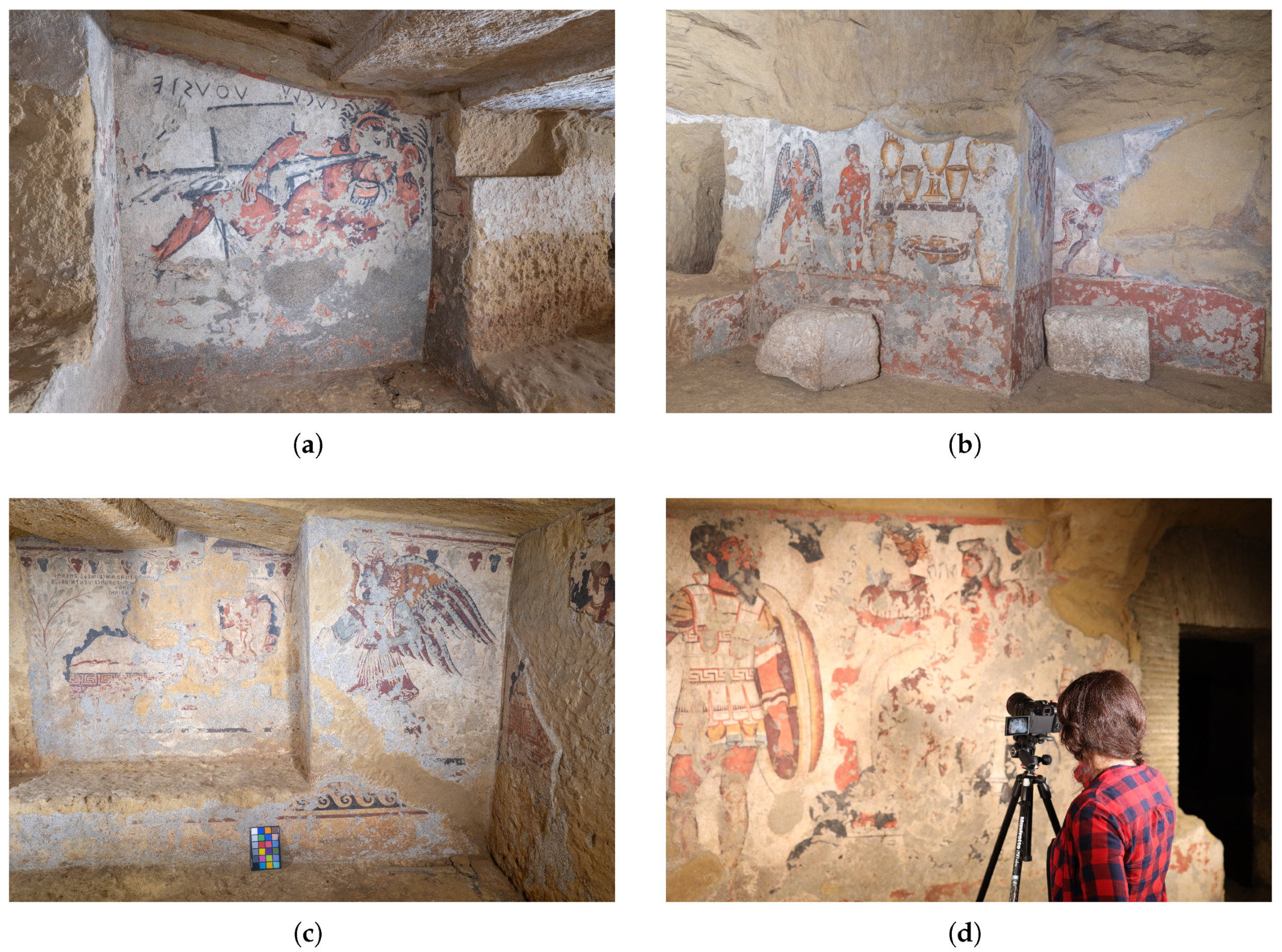


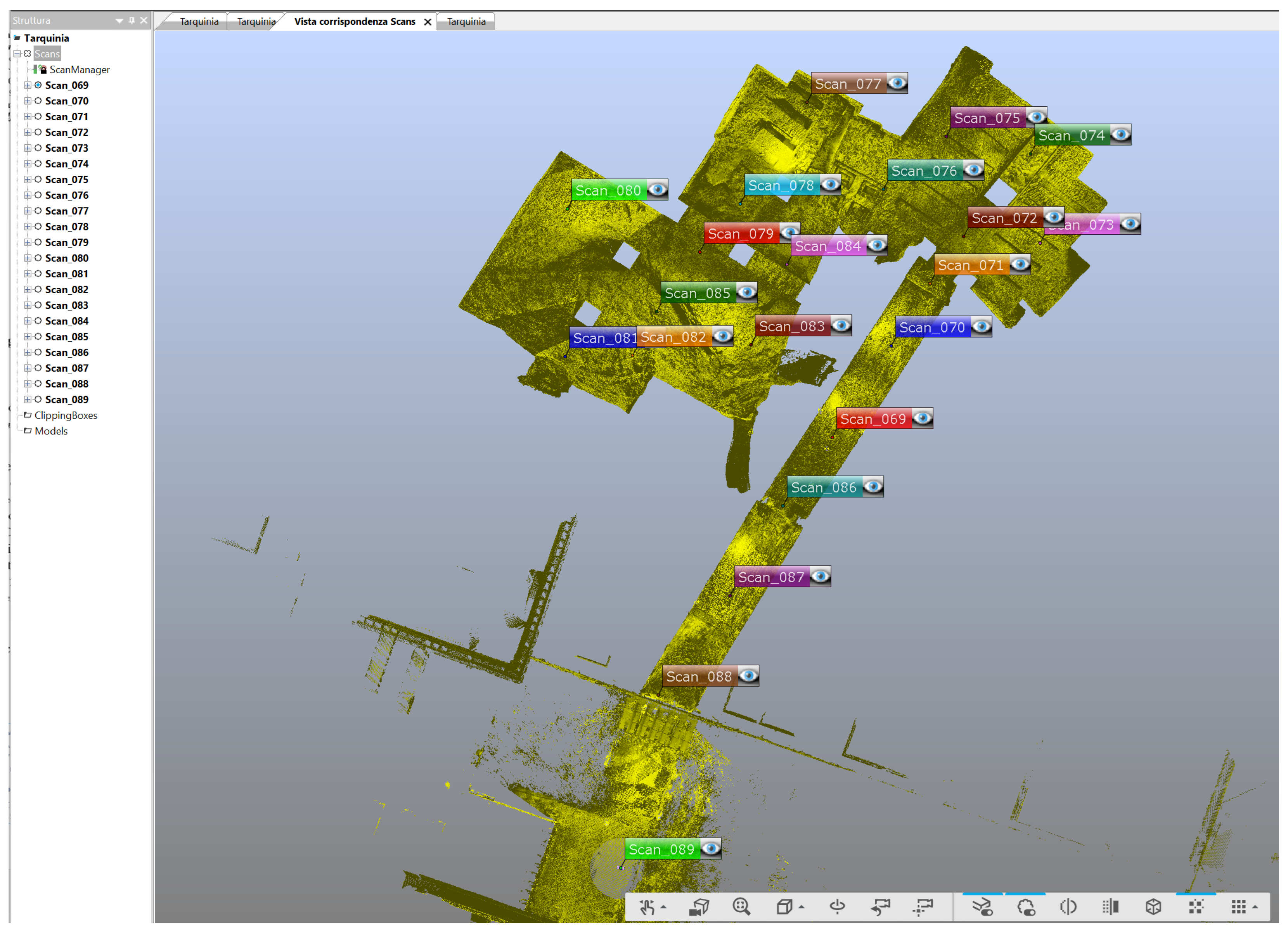
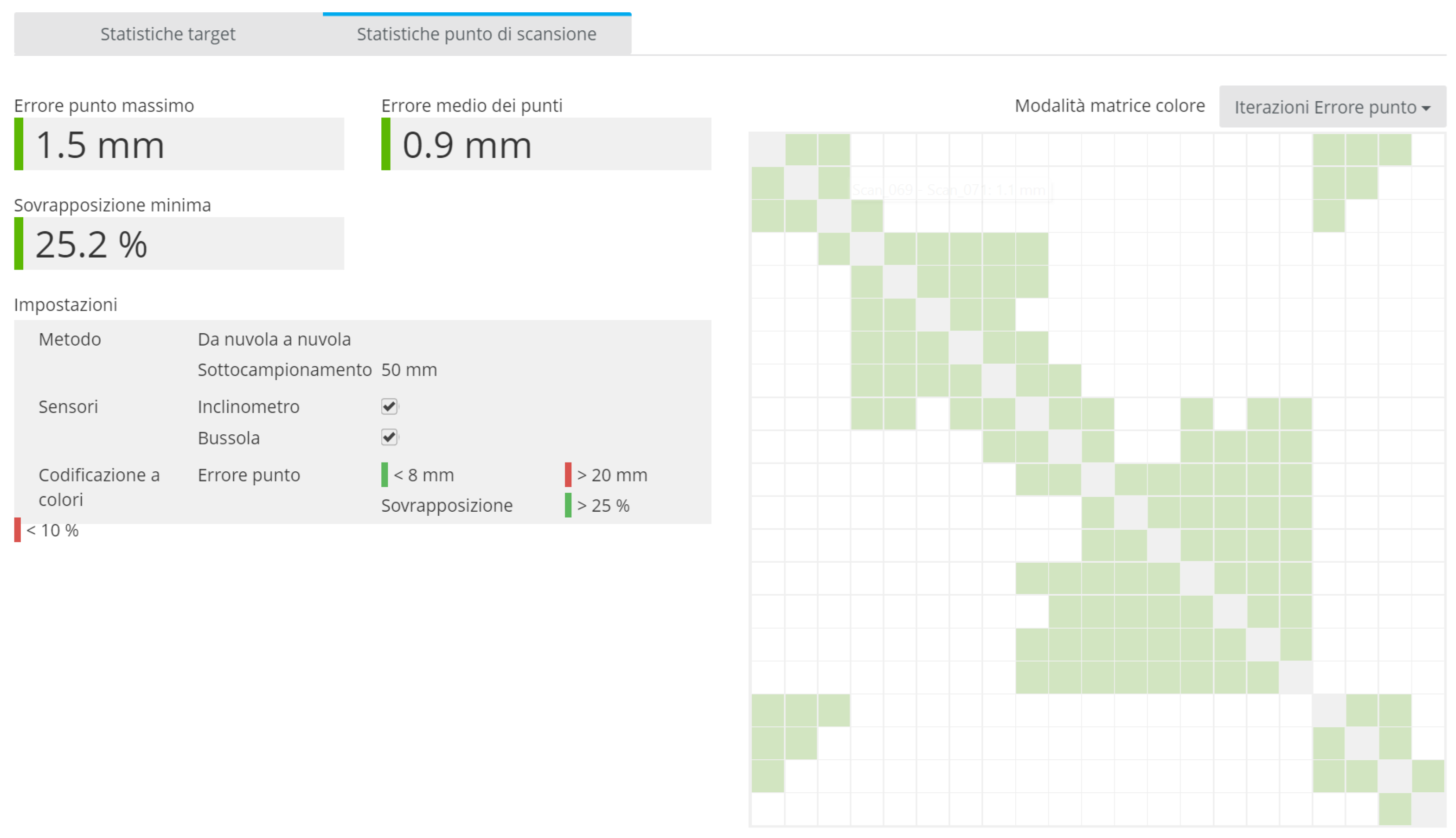

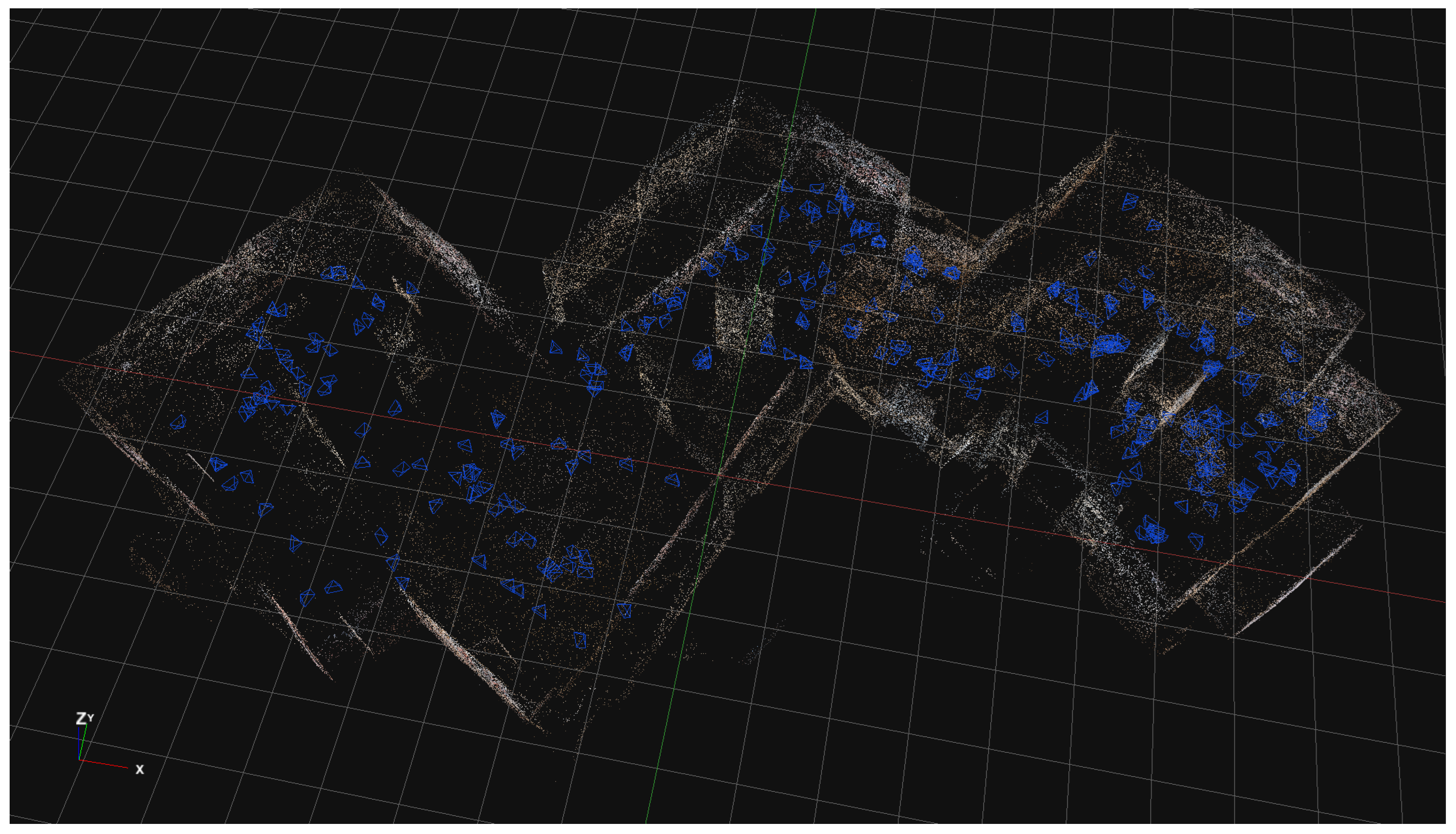




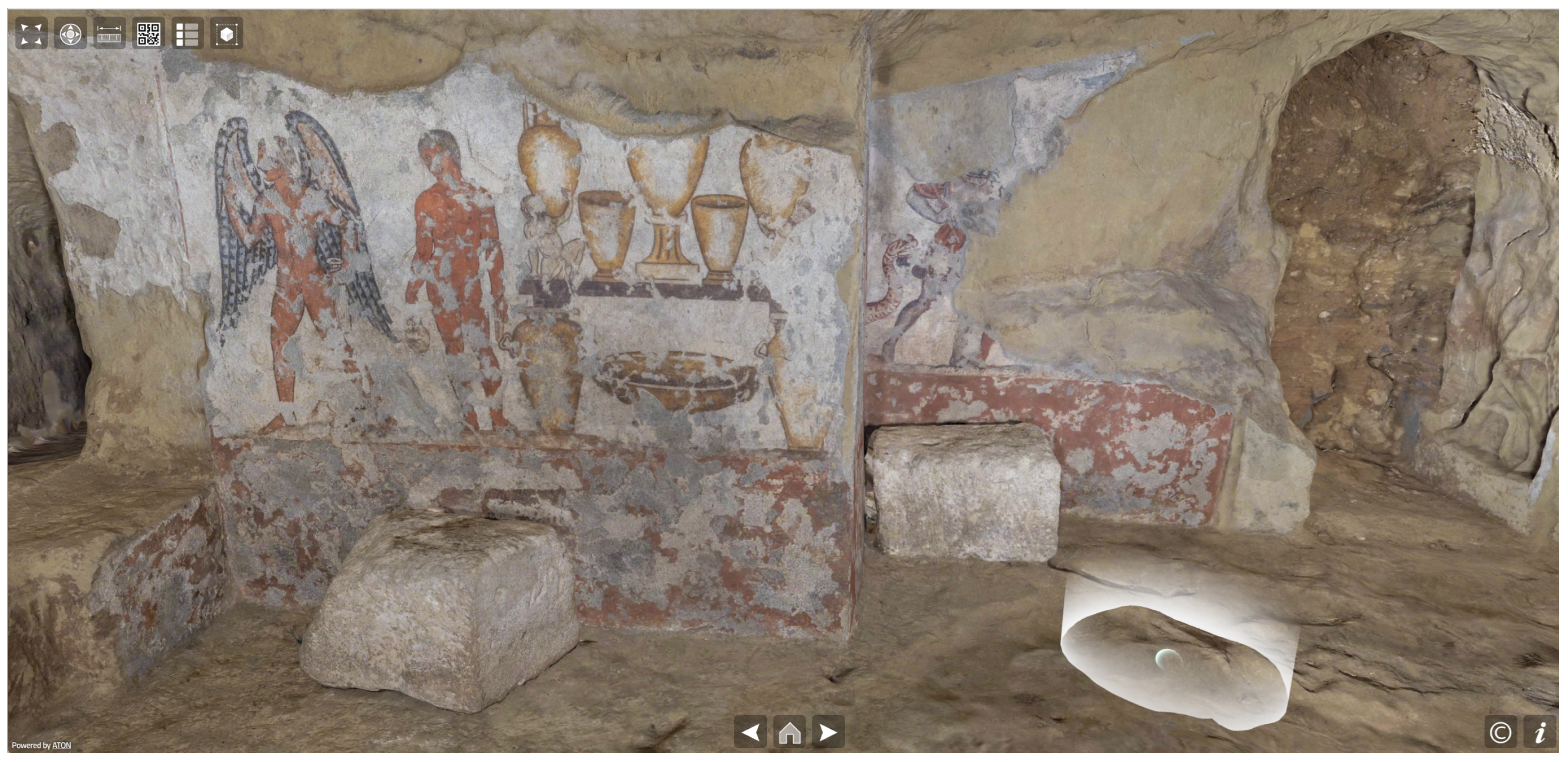
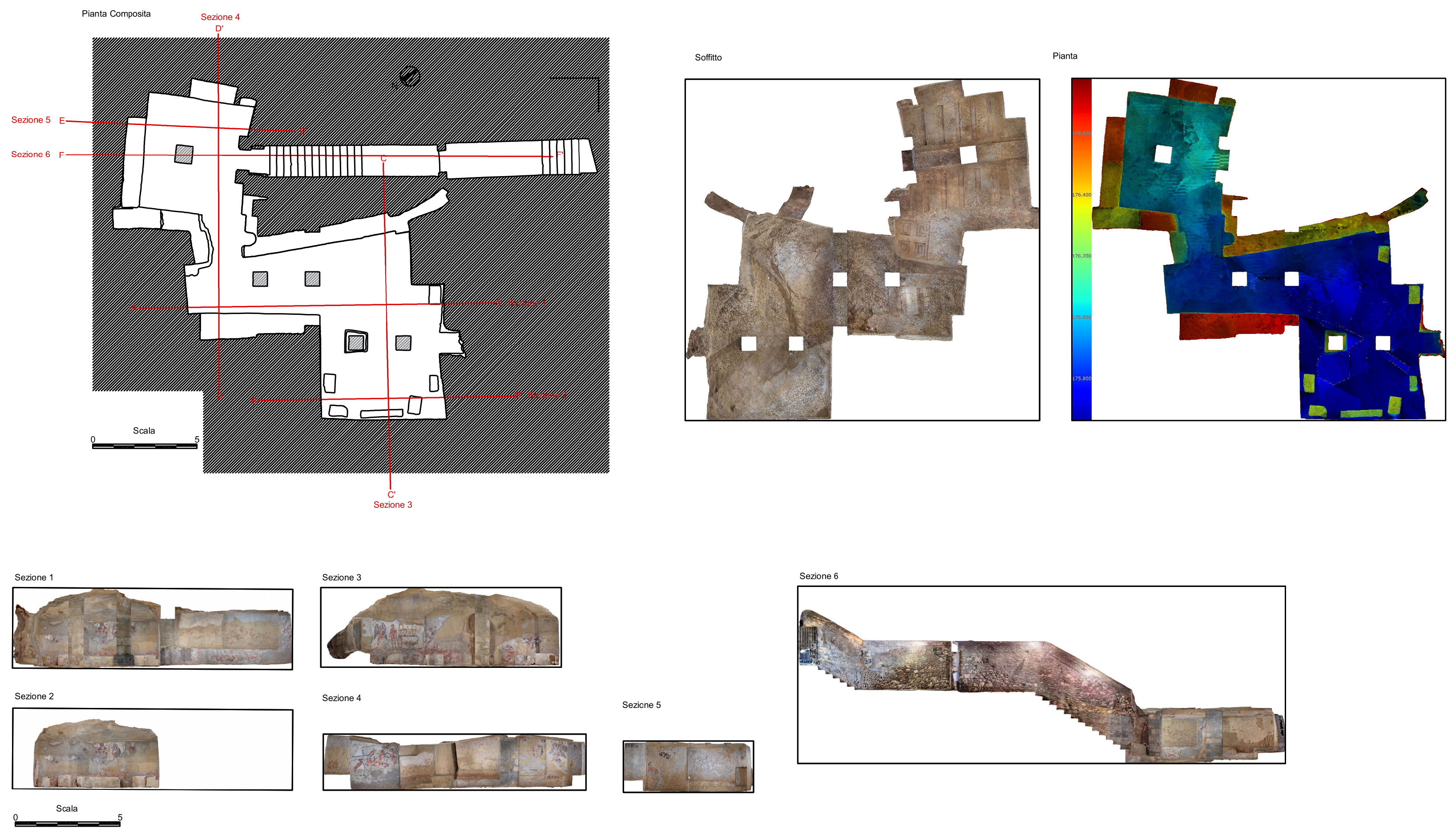
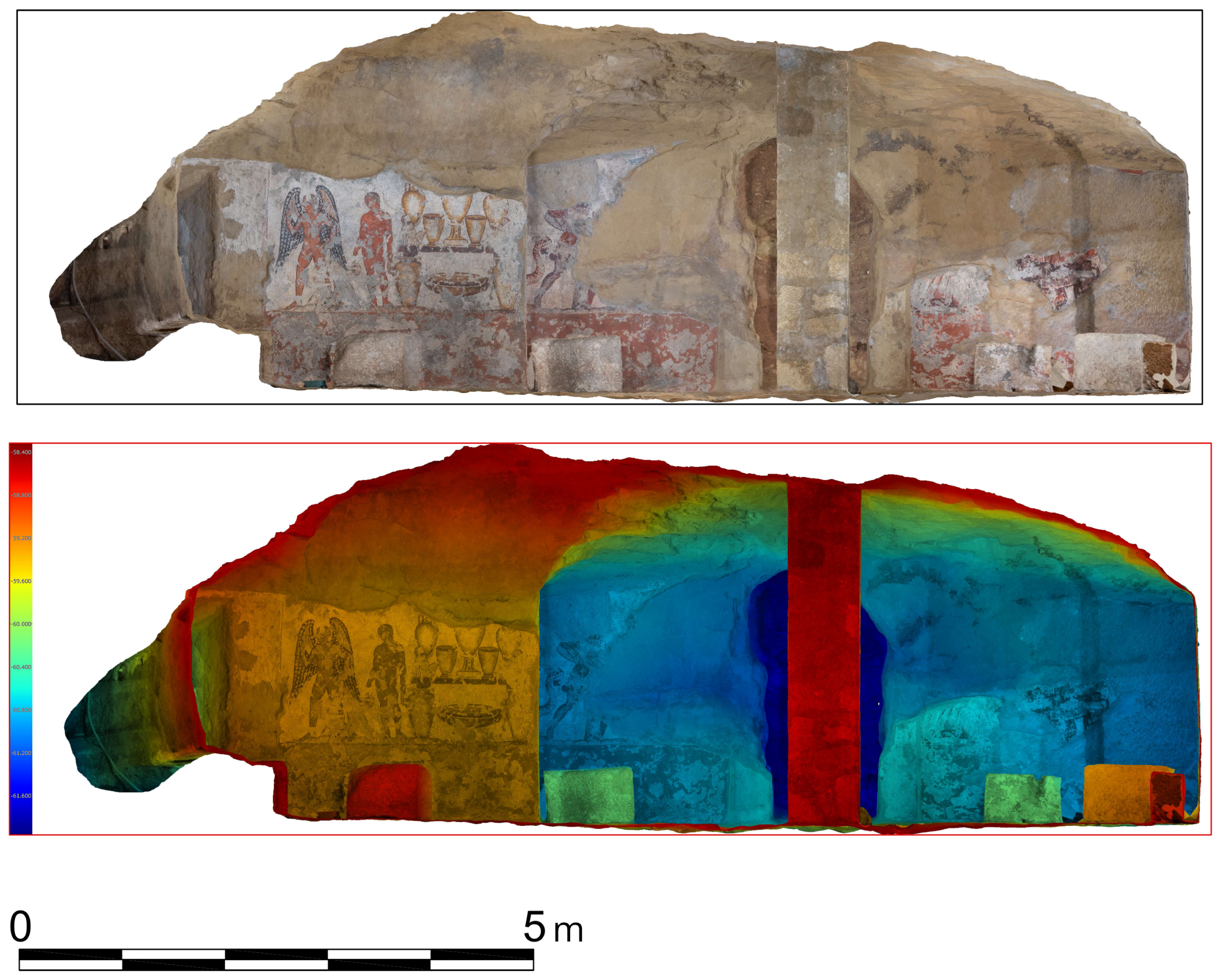
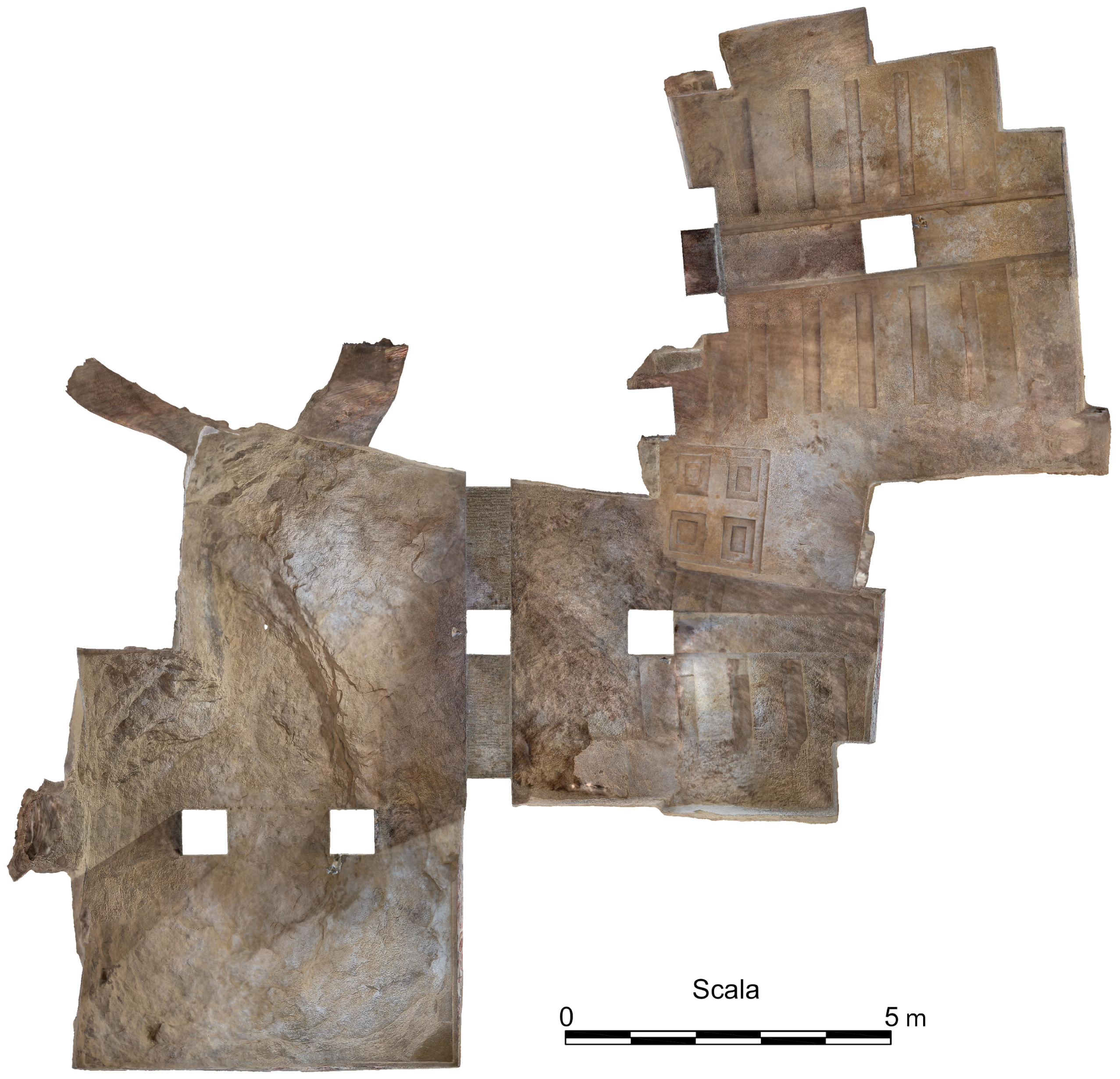
Disclaimer/Publisher’s Note: The statements, opinions and data contained in all publications are solely those of the individual author(s) and contributor(s) and not of MDPI and/or the editor(s). MDPI and/or the editor(s) disclaim responsibility for any injury to people or property resulting from any ideas, methods, instructions or products referred to in the content. |
© 2025 by the authors. Licensee MDPI, Basel, Switzerland. This article is an open access article distributed under the terms and conditions of the Creative Commons Attribution (CC BY) license (https://creativecommons.org/licenses/by/4.0/).
Share and Cite
Lombardi, M.; Rega, M.F.; Bellelli, V.; Frontoni, R.; Tomassetti, M.C.; Ferdani, D. Bringing Light into the Darkness: Integrating Light Painting and 3D Recording for the Documentation of the Hypogean Tomba dell’Orco, Tarquinia. Appl. Sci. 2025, 15, 12463. https://doi.org/10.3390/app152312463
Lombardi M, Rega MF, Bellelli V, Frontoni R, Tomassetti MC, Ferdani D. Bringing Light into the Darkness: Integrating Light Painting and 3D Recording for the Documentation of the Hypogean Tomba dell’Orco, Tarquinia. Applied Sciences. 2025; 15(23):12463. https://doi.org/10.3390/app152312463
Chicago/Turabian StyleLombardi, Matteo, Maria Felicia Rega, Vincenzo Bellelli, Riccardo Frontoni, Maria Cristina Tomassetti, and Daniele Ferdani. 2025. "Bringing Light into the Darkness: Integrating Light Painting and 3D Recording for the Documentation of the Hypogean Tomba dell’Orco, Tarquinia" Applied Sciences 15, no. 23: 12463. https://doi.org/10.3390/app152312463
APA StyleLombardi, M., Rega, M. F., Bellelli, V., Frontoni, R., Tomassetti, M. C., & Ferdani, D. (2025). Bringing Light into the Darkness: Integrating Light Painting and 3D Recording for the Documentation of the Hypogean Tomba dell’Orco, Tarquinia. Applied Sciences, 15(23), 12463. https://doi.org/10.3390/app152312463







